Bocas del Toro – Panama’s Caribbean Paradise
This is my final post on a recent trip to Panama with Canadian travel specialists, Adventures Abroad and this post’s destination, Bocas del Toro is a 100% contrast from the Chiriqui Highlands where we spent the last two days. Whereas the Chiriqui Highlands were cool and wet, Bocas del Toro promises to be hot and sunny – just the place to take chill out of our bones and to chill out at the end of a trip. Won’t you join our small group of adventurers as we explore this relatively unknown Caribbean hideaway?
Bocas del Toro – Getting There
Although Bocas del Toro does have a small airport from which we will be flying back to Panama City at the end of our visit, right now we are literally at the end of the road high up in the Cordillera de Talamanca that splits a good part of Panama and Costa Rica in two. So flying is not an option. Although, as the crow flies it isn’t that far from the Chiriqui Highlands (part of the Cordillera de Talamanca) to Bocas del Toro, driving there will involve returning almost to the Pacific Coast, following the Panam Highway south then turning east to cross the Continental Divide. Finally we will reach the Caribbean at the small town of Almirante where we will board a small boat to take us to the island of Colon which is our final destination. It will take the good part of a day, but I love traveling by bus in a foreign country, seeing new landscapes and ways of life that are so far removed from everyday Canadian existence.
Panama does not disappoint as we pass scenes like this primitive straw house with neither electricity or water, let alone the other amenities we First Worlders expect as our God-given right. It’s a sharp and stark contrast between the modernity and prosperity of Panama City. Should those Panamanians be pushing to end living conditions like this or are the people who live here possibly just as happy as those coping with the urban rat race? These are the type of questions that often spring to mind when traveling in developing countries like Panama. I don’t profess to know the answers, but I’m glad to get a chance to ponder on them as we move high up in the cloud forest to cross the Continental Divide.
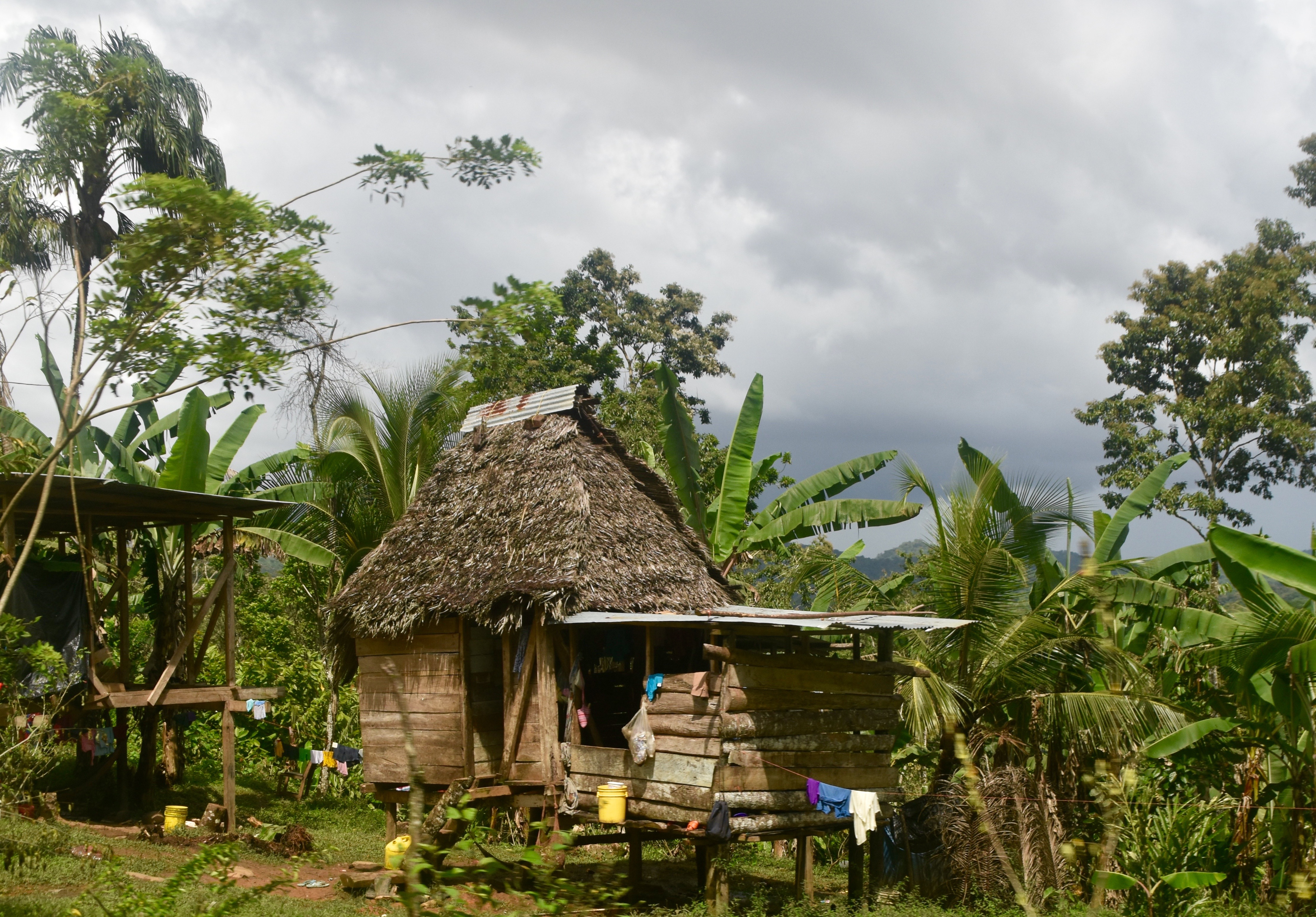
Somewhat ironically, not far from the small wooden and straw hut without electricity, we come upon Panama’s largest dam and hydro-electric project as symbolized by this hand grasping what I presume is a bolt of electricity.

This spillway at Fortuna Dam does not do justice to the size of the impoundment created by the dam or the height of the dam which is over 300 feet. It produces fully 30% of all Panama’s electricity and was built with the assistance of Hydro Quebec, so there is a direct Canadian connection.
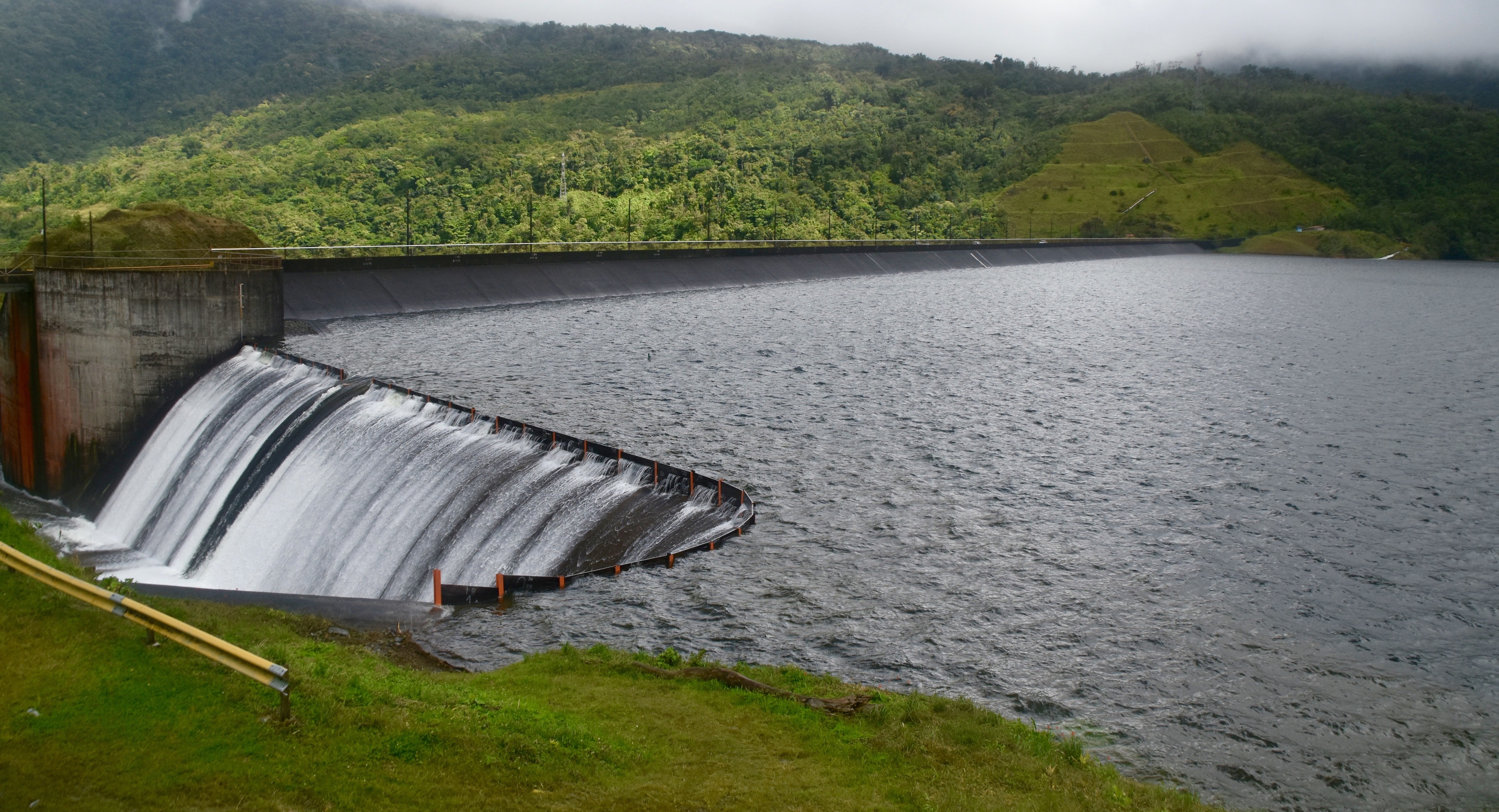
Coming down to the Caribbean coast the temperature rises dramatically and the clouds disperse. At last we reach Almirante where we board this small boat for the final few miles across the clear waters to Isla Colon.
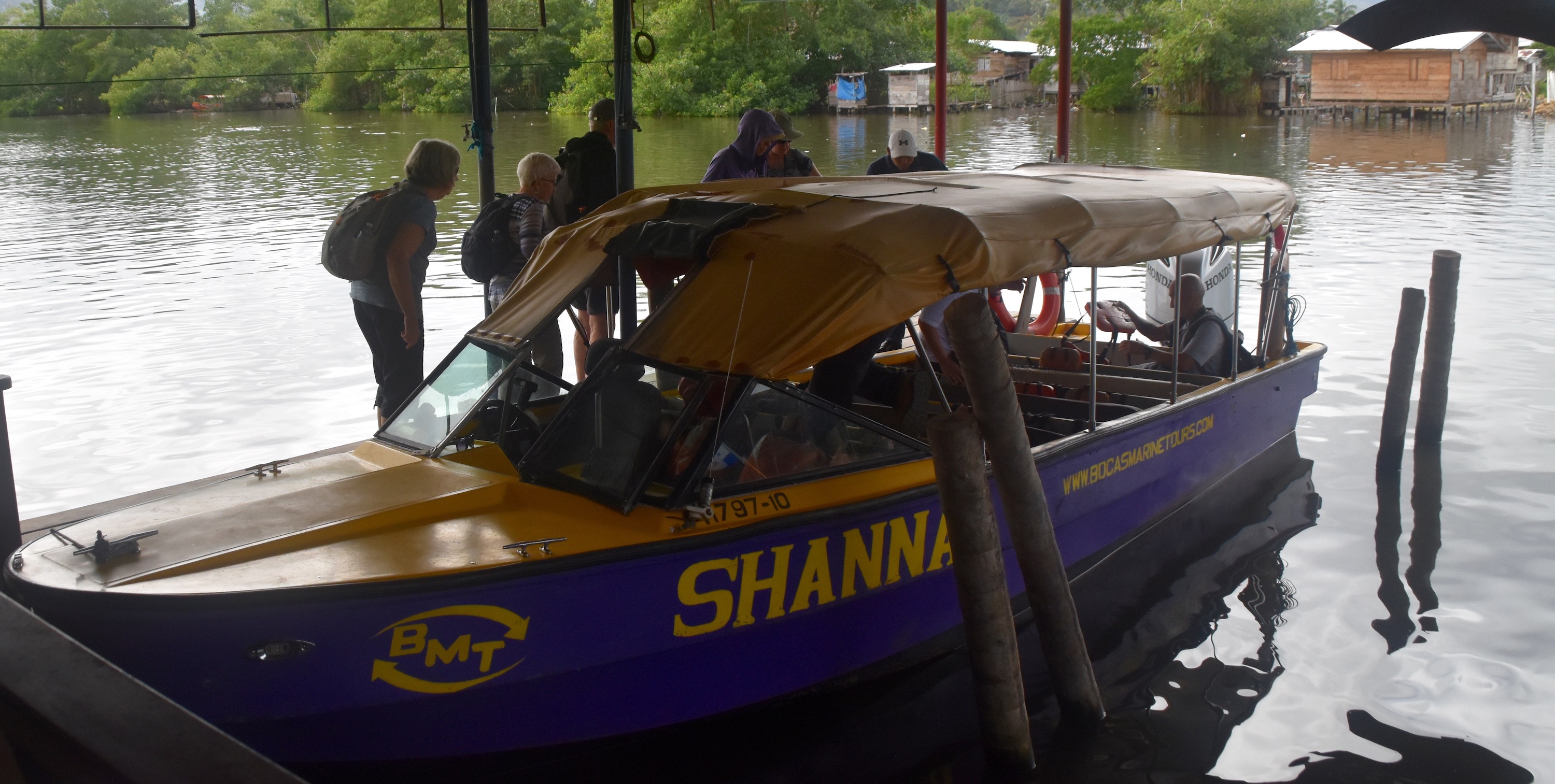
It’s a short, but very interesting ride as once again the contrast between the old and the new is very much on display, like this dugout canoe, the oldest form of boat known to man and still very much in use today.
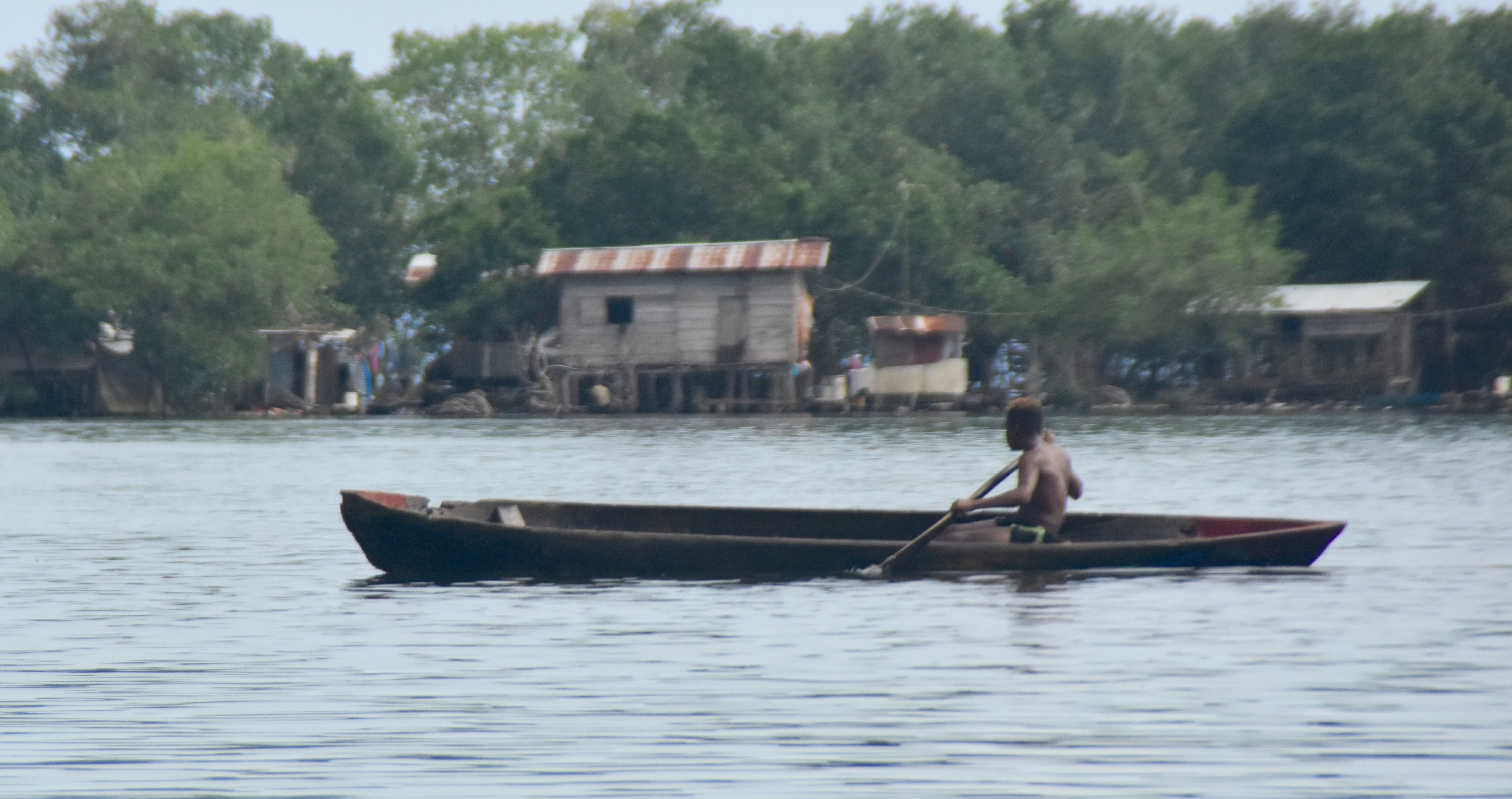
Or these stilt houses which some might call shanties and others an ideal place to get away from it all.

Or maybe just watch a little TV.
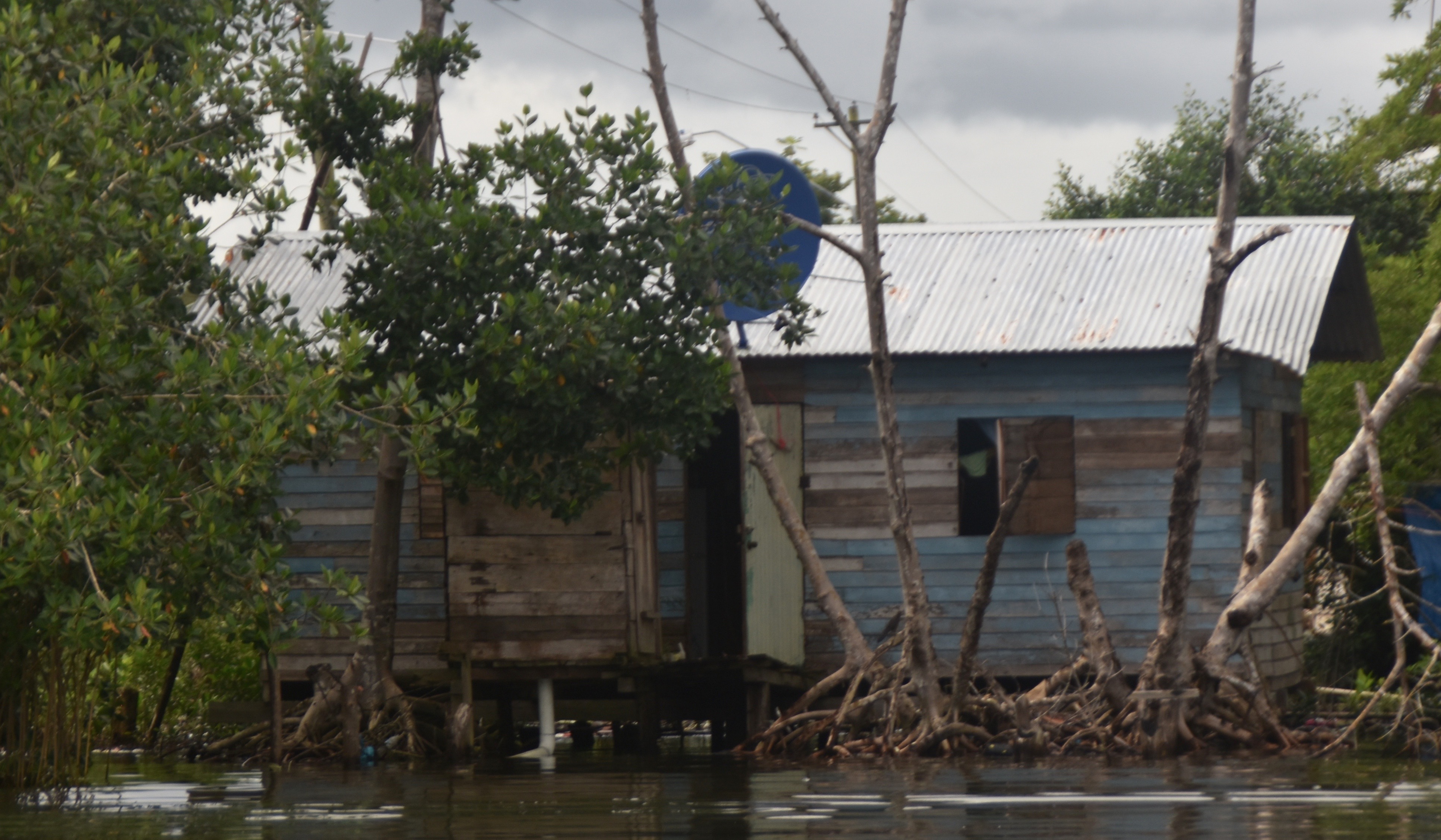
Arriving at Bocas del Toro, it definitely has that end of the road ambience that attracts all different types including people like our group who just want to experience what life is like in a place as seemingly remote as this, without really having to give up those First World amenities I wrote of above. Travel is the best teacher and I do not begrudge those who want to learn while not necessarily giving up too many creature comforts. At the same time one has to realize that if you really want to understand a way of life totally different then your own, you do need to discard presuppositions, prejudices and judgmental thinking. Adventures Abroad always does a great job of combining both of those philosophies as much as possible.
History
Bocas del Toro literally translates as ‘Mouth of the Bull’, but there seems to be no consensus on what the name signifies, who first coined it or even if that is the correct spelling. What is known is that Christopher Columbus was the first European to arrive in the area in 1502 on his fourth voyage of discovery. Thus the names of Colon and Christobal for two of the islands that make up the archipelago. Unusually for the Europeans, the new arrivals did not clash with the natives and seemed to have purchased through barter, what they needed to refit their ships. Later English slave owners from Jamaica and other parts of the Caribbean arrived with their human chattels and established trading posts, exchanging European goods for turtle shells, mahogany and other valuable items collected by the native inhabitants.
The area changed hands a number of times between Costa Rica, Colombia and Panama, but has been in Panamanian hands since a settlement was reached with Costa Rica in 1914. Today, less than 10,000 people live in the entire area and over half of it is recognized as belonging to the Ngobe-Bugle tribe, the largest Aboriginal group in Panama.
So, in a nutshell, Bocas del Toro has a great mixture of cultures, cuisines and customs and I haven’t even mentioned the natural beauty of the area which is its top attraction.
Visiting On Foot & By Boat
Almost everybody in Boca del Toro lives in the town on Isla Colon unsurprisingly called Bocas Town. This is where you’ll find a variety of accommodation with most of it aimed at younger more adventuresome types without a lot of money, but a lot of time. They come here to hang out, make out and fully embrace the YOLO mentality. It gives Bocas Town a vibe that’s catching and makes Alison and me feel like we are fifty again. I start by buying this chic Panama hat from an old lady with a small shop selling authentic Bocas souvenirs. The only problem is that real Panama hats come from Ecuador, but I’m quite happy with this very flexible Panamanian knockoff. Kinda makes me look like Truman Capote who lived in another famous party town, New Orleans.
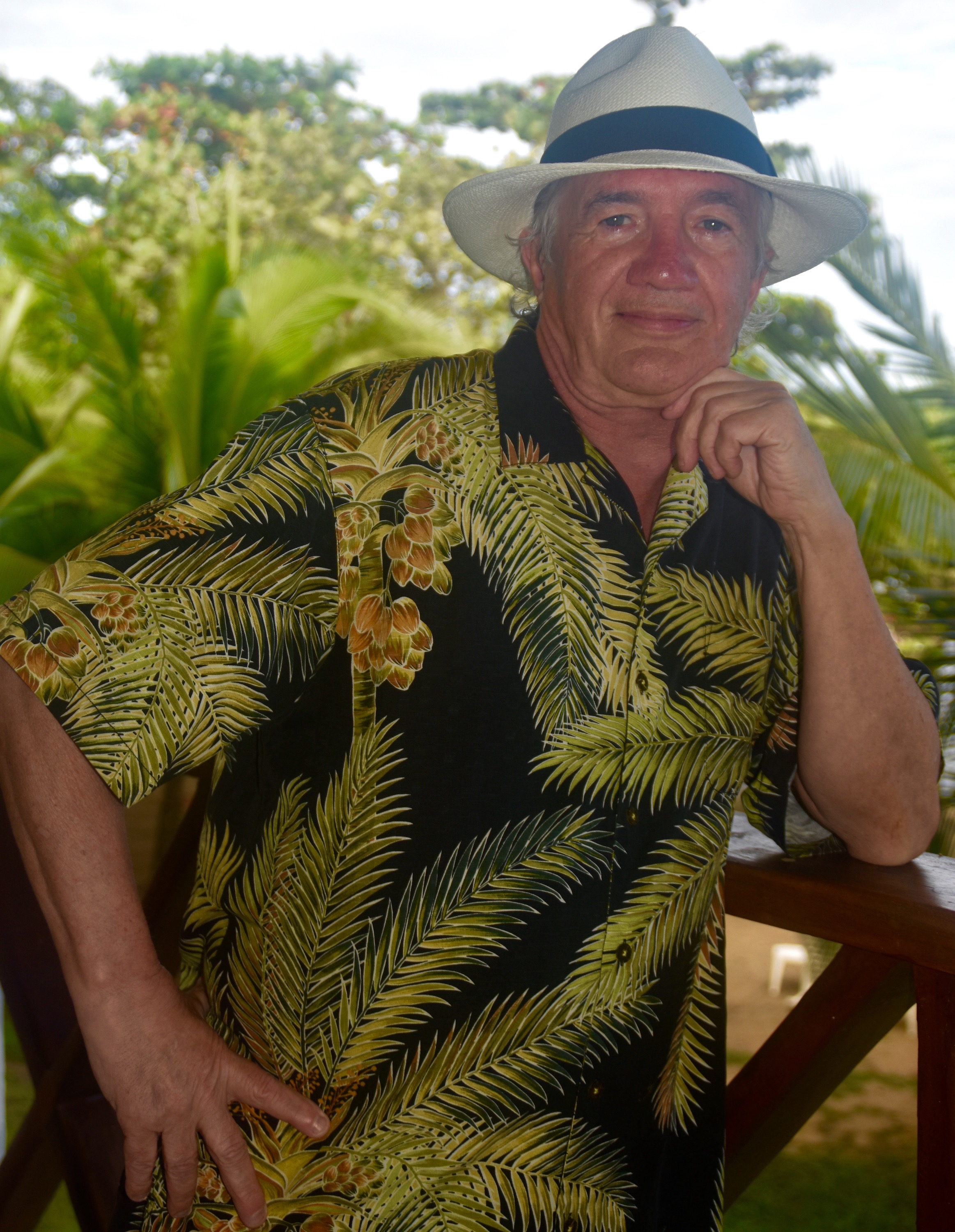
Now that I’m properly decked out it’s mojito time; add in some ceviche and we’ll party like its 2005.
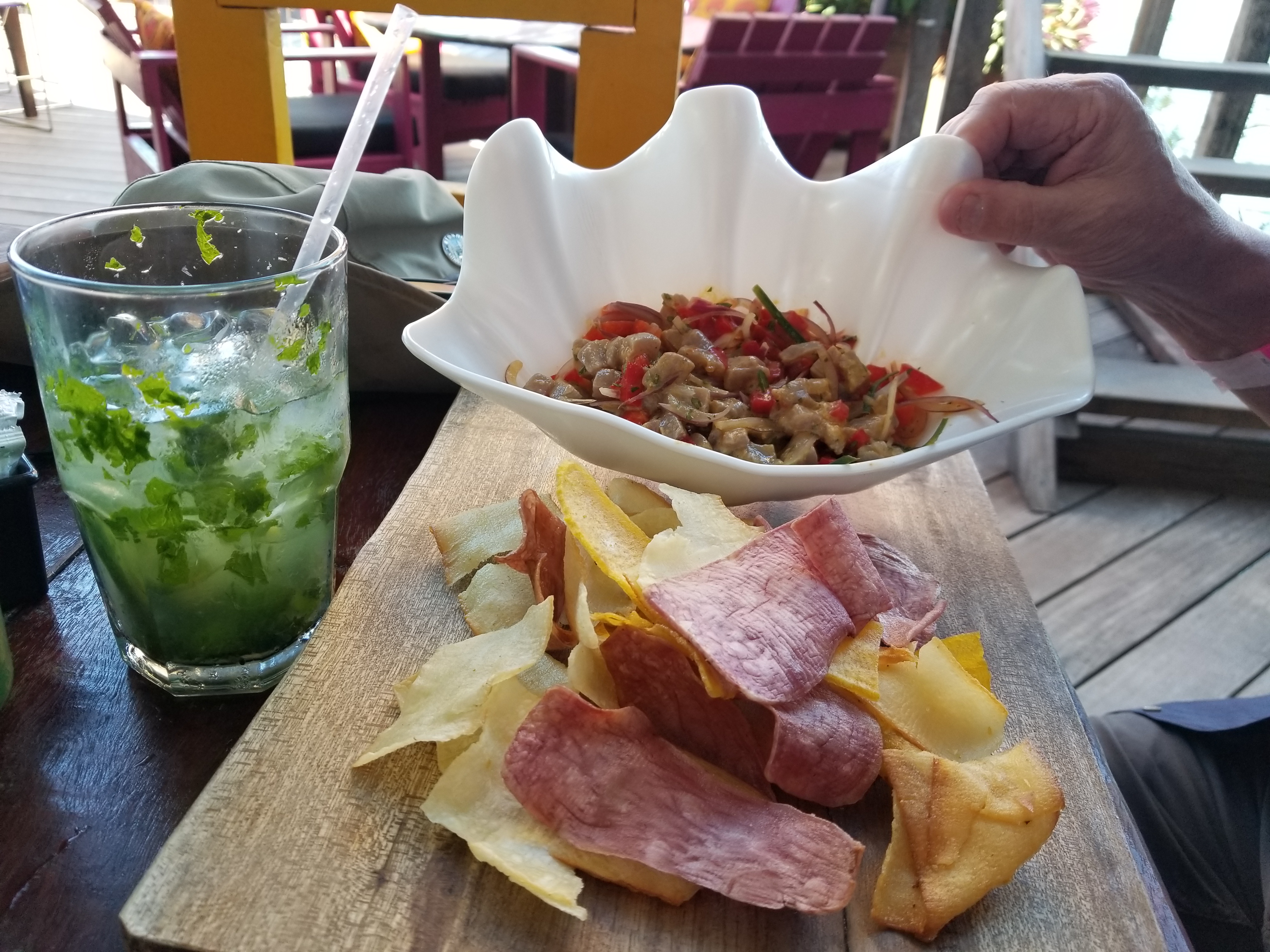
We even make this pathetic attempt at a selfie. I can’t remember much after that.
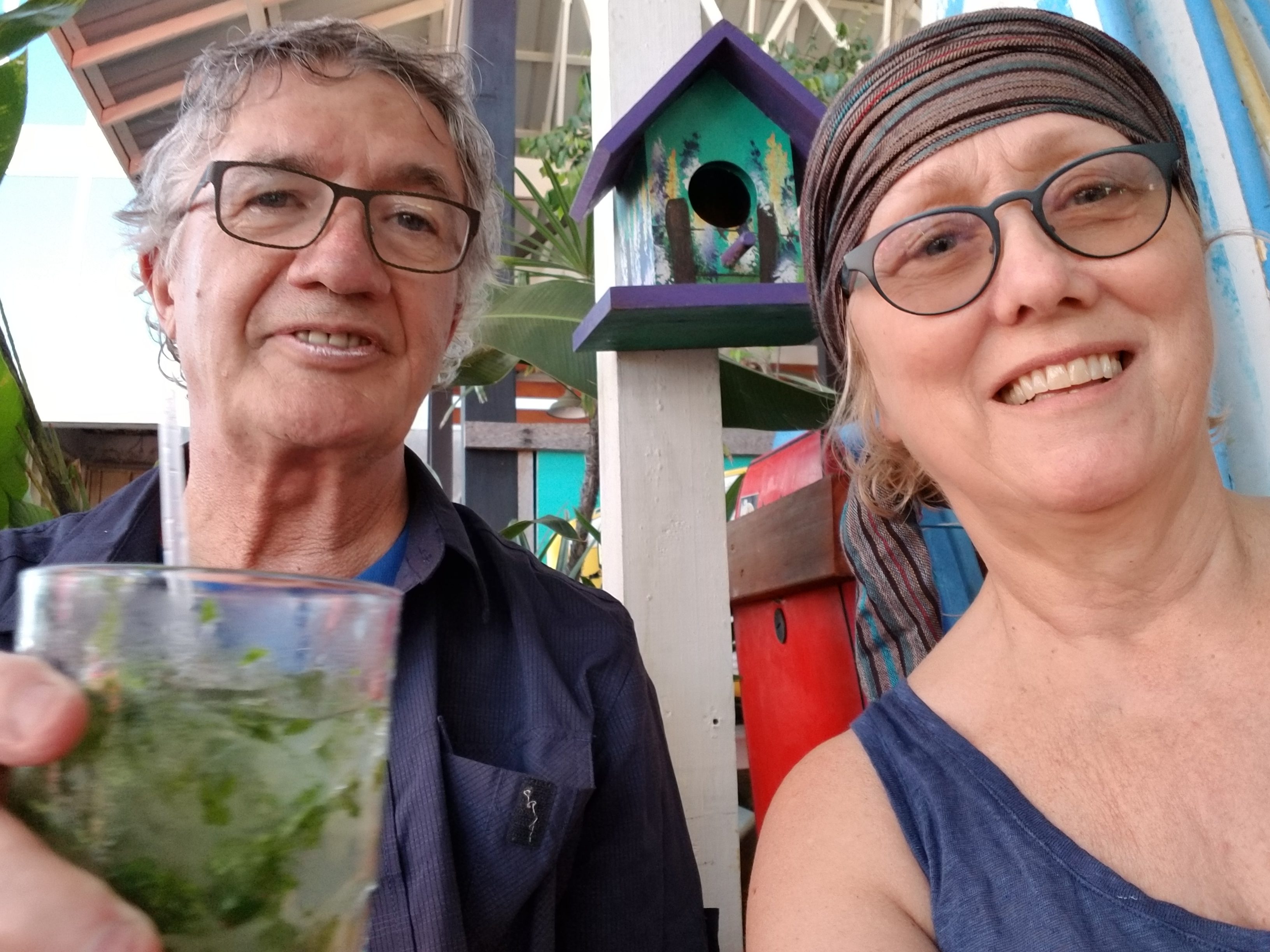
Bocas del Toro by Boat
Next morning brings another sunny day in Bocas del Toro and perfect weather for exploring the archipelago. Andrés Fernandéz, our intrepid and unflappable Adventures Abroad guide, hires a boat for those interested in spending the day on the water and most in the group take him up on this great offer.
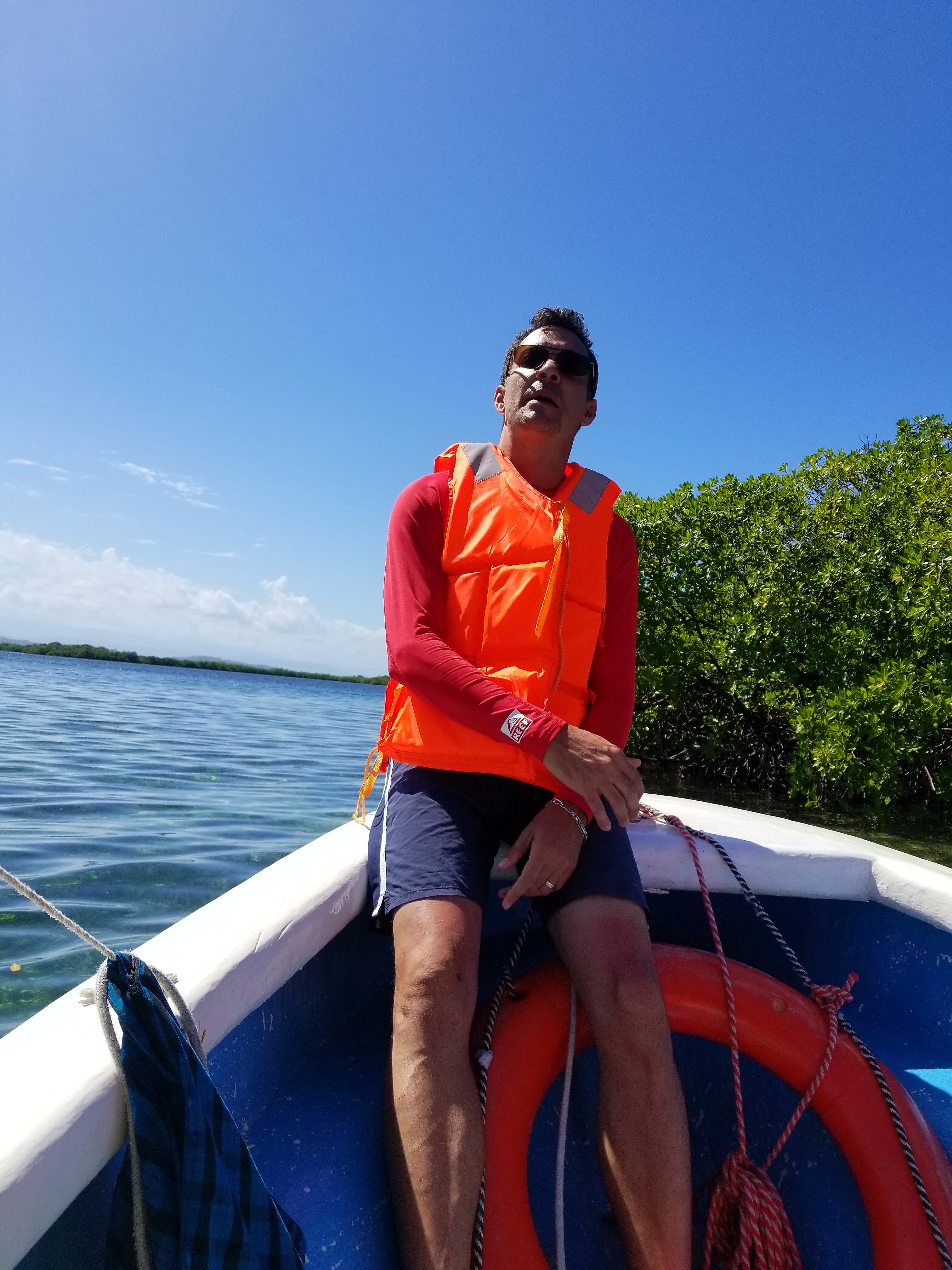
Our first stop is in the Bahía de los Delphines or Dolphin Bay where, guess what, we see dolphins, the big bottle-nosed ones that Flipper made famous. I’m always amazed at how gaga people go over dolphins, but then again I see them every year in Florida and elsewhere so maybe I’m jaded. Certainly most of the other people on the boat enjoyed watching them porpoise through the water alongside the boat.
Stop number 2 is more interesting for me as it involves getting into the water to look at fish, coral and other sea life. Only a few people opt to snorkel in the quite shallow waters just off Isla Solarte, but those who do are rewarded with a goodly number of colourful fish sightings. I was particularly impressed with the number of different coral species, some of which I had never seen before and the overall clarity of the water. I have been in places where there are so many people, many leaking oil from their non-water soluble sunscreen, that the water literally has filmy sheen on it.
This photo, taken from the boat in another spot, gives an idea of the water clarity and the wonderful way the sunlight refracts in the water.

Here today we were the only group snorkelling in this spot and that was a real pleasure, so much so that we almost had to drag Alison out of the water to move on.
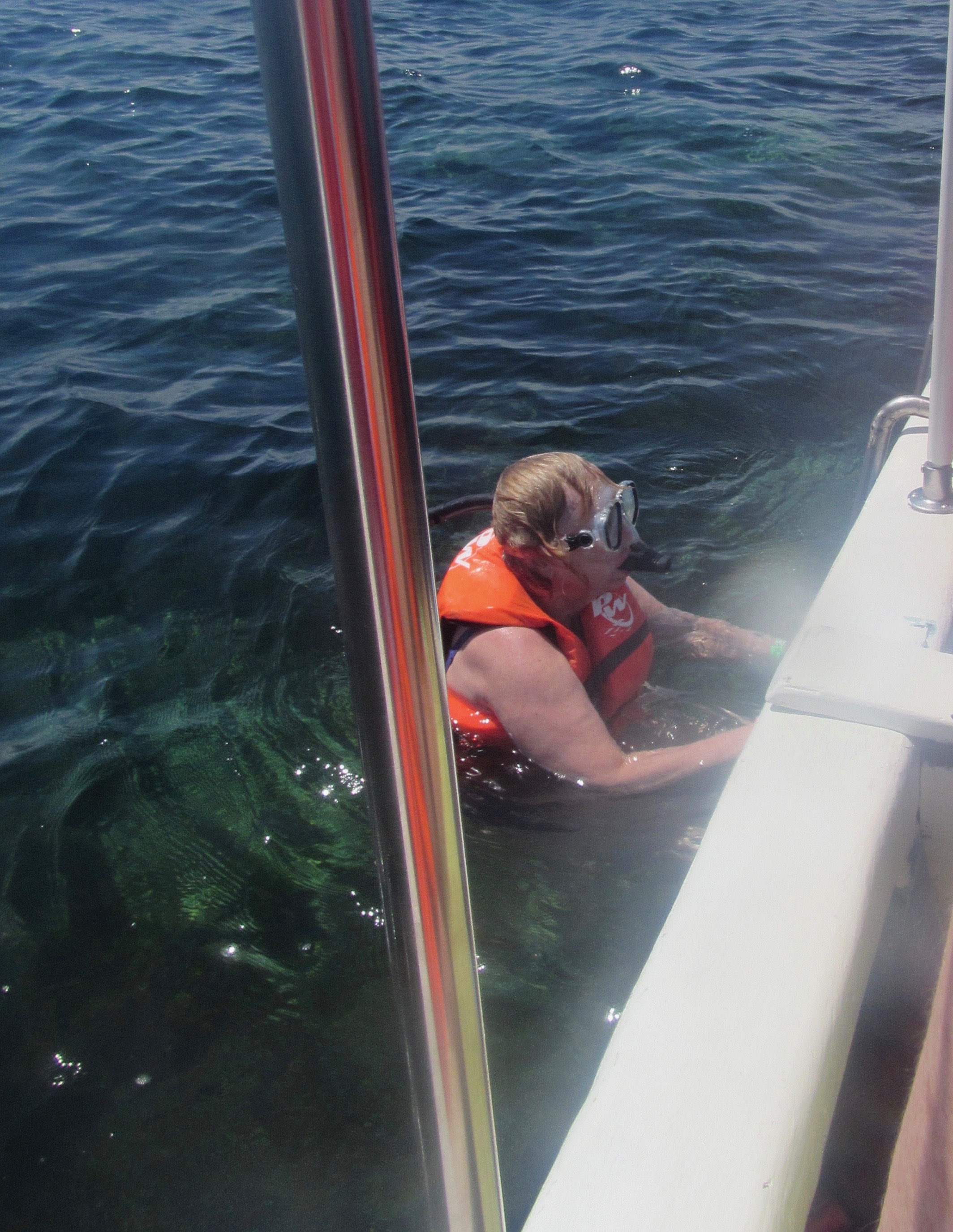
Next we motored to Bastimentos Island which is a National Marine Park and pulled up to one of the rickety wooden docks that allowed us to get ashore without getting wet. There was quite a crowd already there, most just sunbathing, but others venturing into the very large waves breaking onto the sandy beach. There were even a few other Canadians among the admix of many nationalities enjoying the sun, sand and seawater.
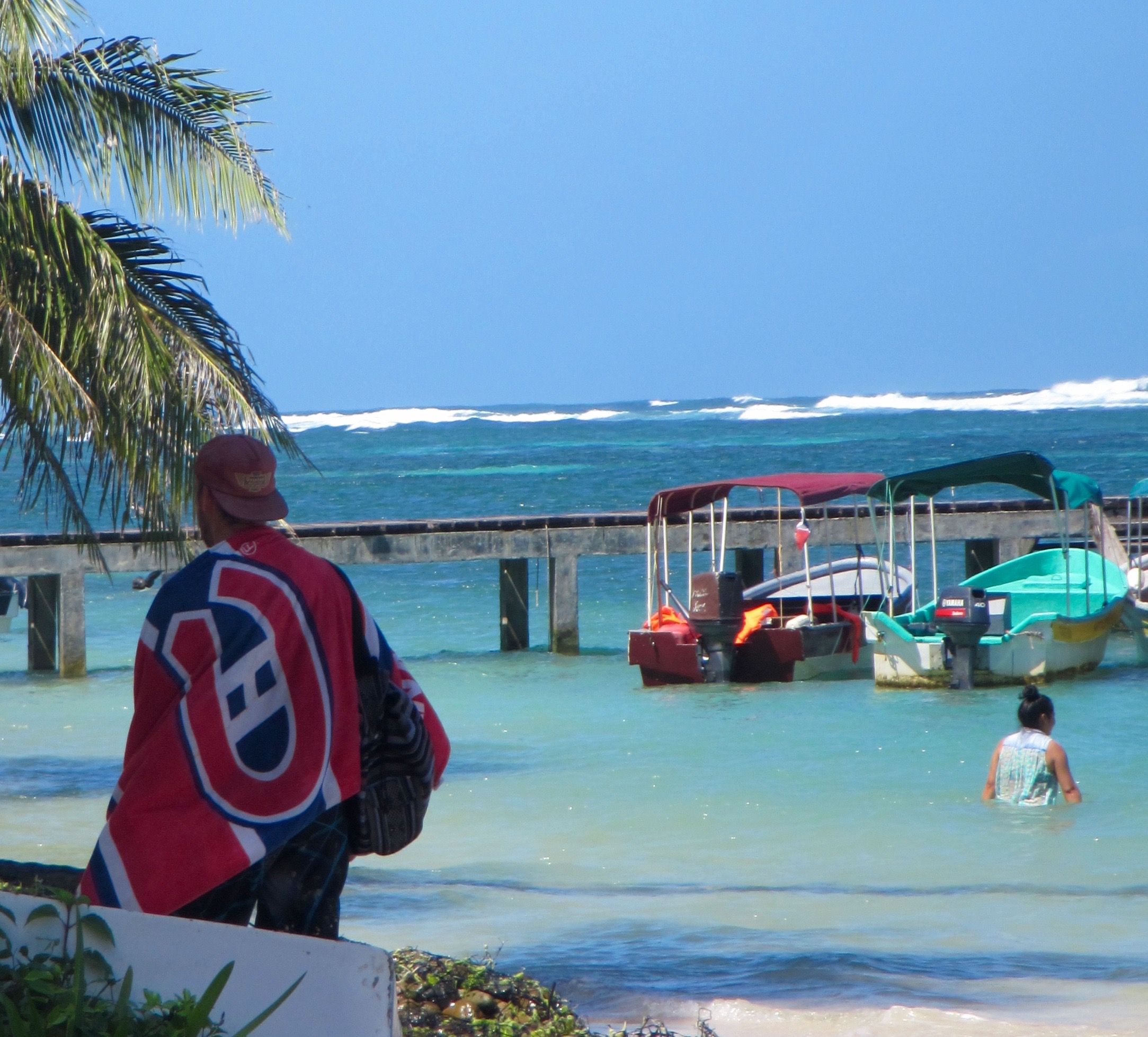
Ignoring the abomination on the guy’s towel (I’m definitely not a Habs fan), you can see just how large the waves are breaking about 100 yards offshore. The thing that I found most unusual about Bastimentos Island is that even though it is over 90% mangrove forest, it still has sandy beaches along its entire north shore. In my experience, most mangrove forests go right up and into the water and there not exactly inviting places to wander around in.
Alison and I decided to spend most of our several hours on Bastimentos walking the shoreline rather than just soaking up the sun as most of our group did. Can’t say I blame them as it would be freezing back in Canada, but sun and sit are two words that don’t go together in my vocabulary.
It didn’t take long to get away from the crowds near the landing docks and pretty soon we were all by ourselves in a tropical paradise.
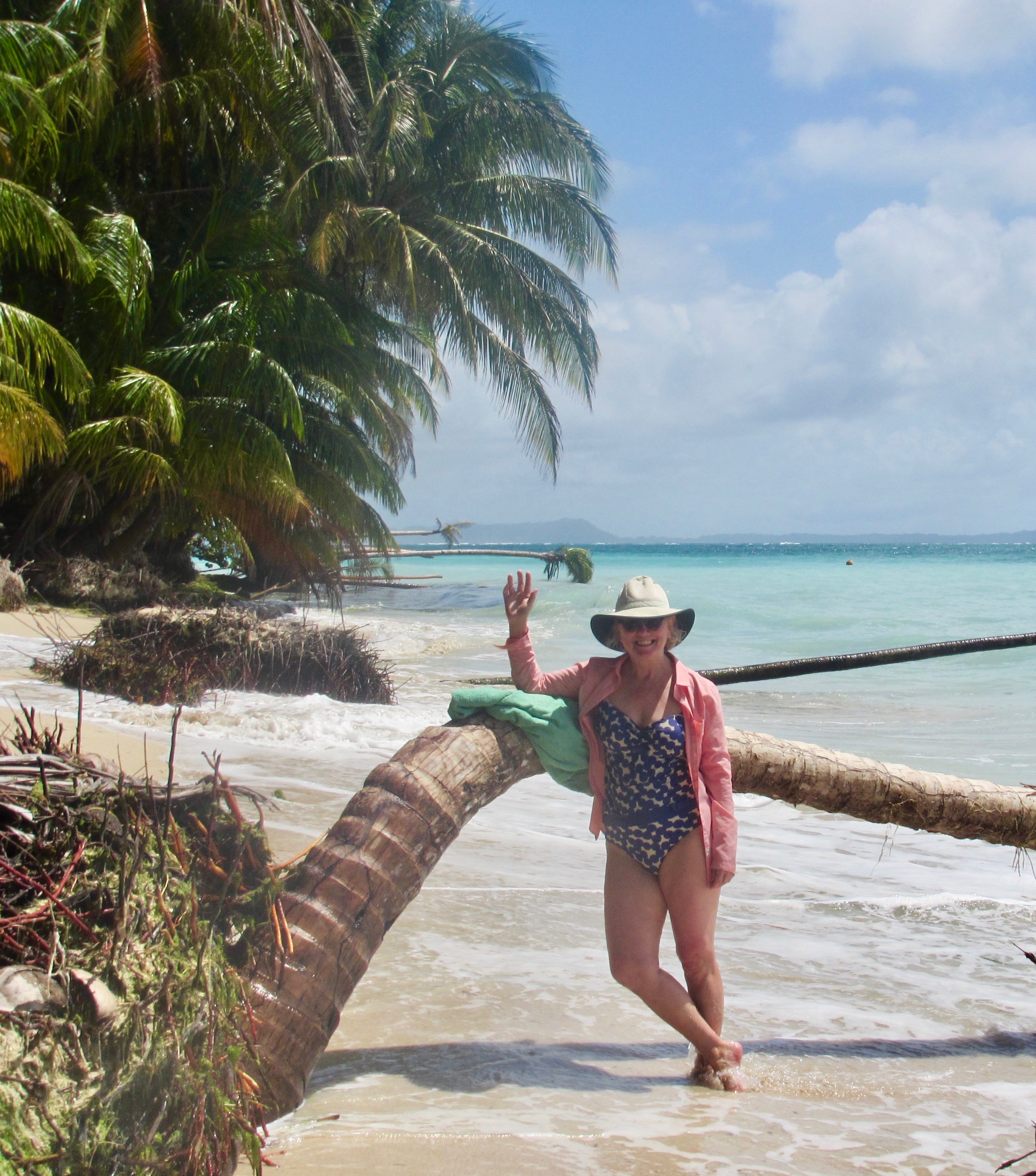
I even contemplated moving here and buying a fixer-upper like this waterfront villa.
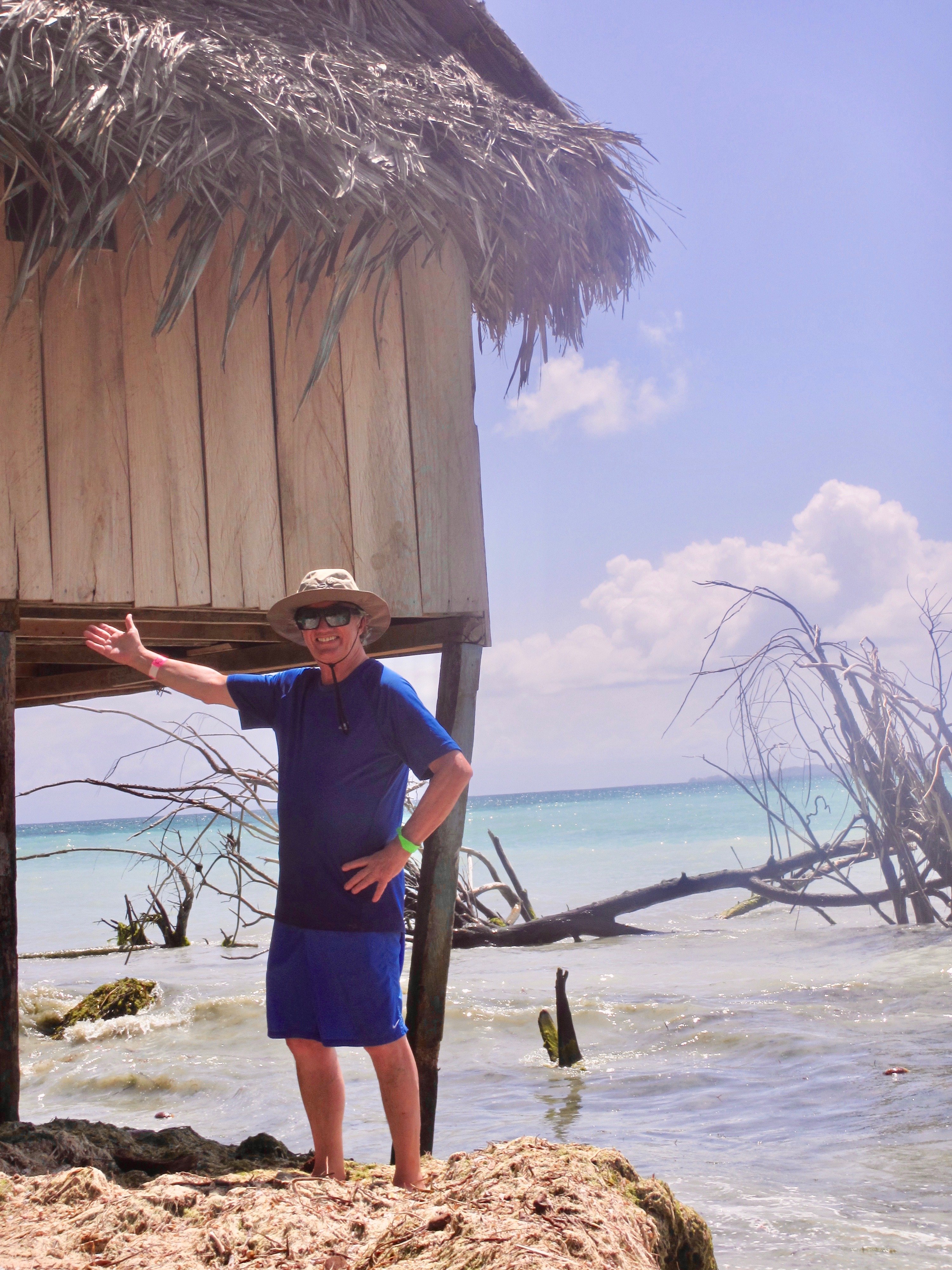
However, sanity prevailed and we returned to the boat where we departed to look for sloths high up in the trees in a deserted lagoon. We found them, but without a telescopic lens I couldn’t get a decent shot. Still I considered seeing the sloths a better sighting than the dolphins.
To say that the time we spent exploring the islands of Bocas del Toro amounted to a perfect day would not be an exaggeration. Before coming here, I always thought of Panama in terms of jungles, swamps, impassable mountains and old Spanish forts. Now I know that it’s also a tropical paradise. Thanks Adventures Abroad for opening my eyes to that.

